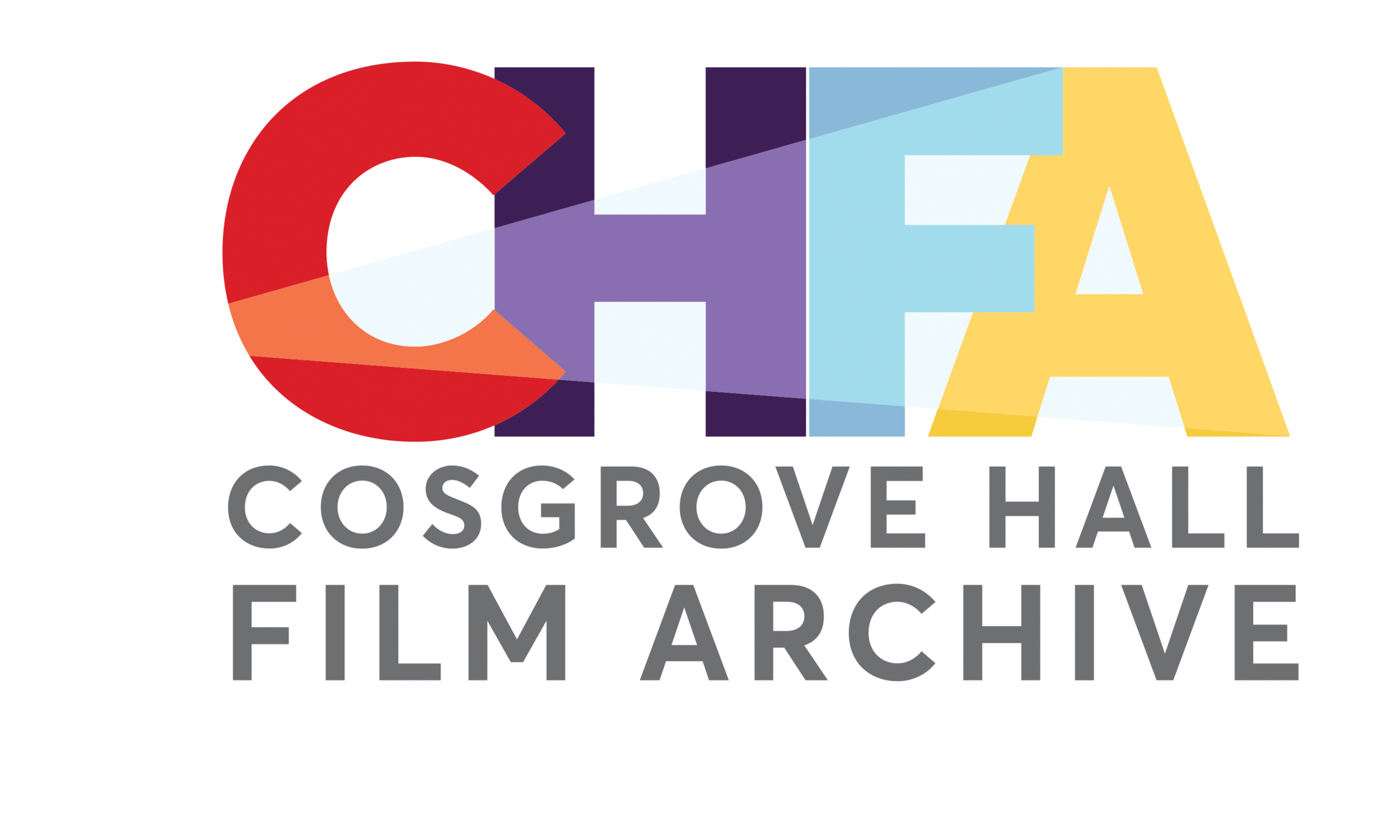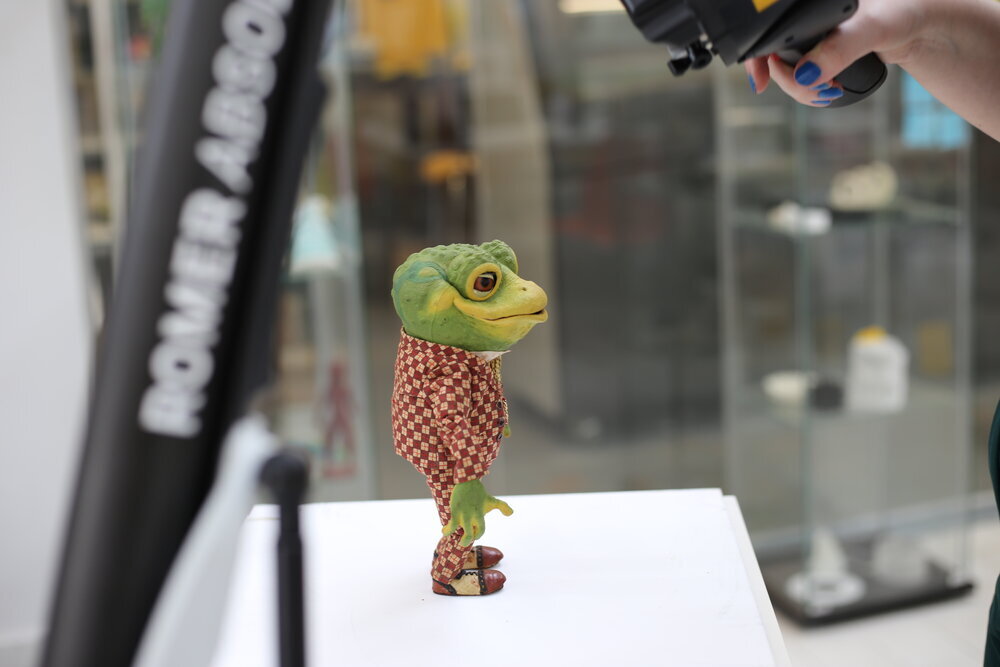Reanimate: Experimenting with 3D Digitisation
Over the last year the need for digital collections and utilising 3D technology to share collections online has significantly increased. In this post our Archive Manager, Rosy Whittemore takes the opportunity to discuss the process we went through with Reanimate, a 3D scanning project in partnership with Manchester Metropolitan University we began in 2019.
3D scanning Toad from Wind in the Willows
Bringing together the CHF archive with partners from Manchester Metropolitan University including the Animation department, students, MSc Industrial Design 3D and Print City facilities at MMU. This project aimed to bridge the gap between stop motion animation and new digital technology, by using new technology to explore new ways of digitising the collection. Connecting audiences to new technologies through cultural assets. The project used existing cultural assets from our archive as a vehicle for researching and experimenting with 3D printing and industrial manufacturing facilities at MMU. The project aimed to instigate an exchange of knowledge, skills, research and materials between fields. Particularly animation students and MMU MSc Industrial Digitalisation course at MMU. We aim to create a new way of preserving the detail in more vulnerable models whilst also creating a more widely accessible digital collection. 3D scanning has been an opportunity to experiment with animation, bridge the gap between analog and digital technologies. Encouraging animation students to embrace digital manufacturing and 3D print, whilst remaining faithful to the medium of stop motion animation.
Scanning Fenella from Chorlton and the Wheelies with a hand held Faro scanner
In the initial stages, the MMU team brought the equipment to us. Using a hand held Faro scanner, we scanned a select few objects in the archive. We started by selecting parts of our collection which reflected a range of materials and selected materials which would provide an interesting challenge and could help us to experiment with the medium. Using a Faro scanner, Chelsea worked her way slowly around the object using the hand held device, this maps out points on the objects and creates a data map on a screen. Whilst doing this we found the Faro picks up a lot of excess noise in the surrounding room. The light levels and surrounding area can also affect this. The post production phase of this is really important because it takes this scan data and edits out excess noise in the image. The post production phase also has the potential to experiment with movement. Showcasing the digitised copy with movable arms.
The post production phase also has the potential Steve Henderson (Manchester Animation Festival, MMU Animation) pointed out this brings up some interesting questions surrounding the authenticity of the character. In the original stop motion series, characters are limited in their movements by the construction of the puppet. For instance, Chorlton from Chorlton and the Wheelies (1976) has wooden pegs for arms which rotate 360 degrees at the joint, but are not capable from moving freely from side to side as an arm should. Therefore, if we were to reanimate these models as 3D scans should the digital copy move in a similar way? Would we combine these limits into the copy to create a faithful restoration of the original?
3D Printed Truckers Head
We also experimented with colour, which was the reason for selecting a detailed colour Trucker’s head. A more simple photogrammetry scan was the most effective way of picking out the detail in colour of the object. On the printed copy, the amount of PVA applied to the surface of the object reflected the amount of colour detail picked out. Chelsea also used the Trucker’s head to experiment with scale, she printed out a larger hand sized version of the head. This allowed you to properly pick out all the details in texture with your hands. Despite the fact the copies are printed in a different material, this means that the new material won’t degrade like the original so people can take a closer look, and the collection even might become more accessible for people who may have visual impairments or want to explore the proportions of the models with their hands.
In April 2019 we made our way to MMU, to experiment with a greater range of technology in their 3D scanning department. We also took detailed photogrammetry scans of a small selection of items from the archive and further scans of some of our moulds, which effectively picked out details in the surface.
Exploring different materials, we found that the surface properties of the materials responded differently to the technology. Materials such as silicone, which had a matt surface tended to scan better, whereas materials with a glossy sheen tended to bounce the laser directly off the surface and confuse the scanner. Also, materials which had an uneven surface, such as rubber foam tended to absorb the light omitted from the laser whereas materials such as felt in the costume of the puppets responded better to the laser.
We found there was a lot of potential in this area, particularly utilising this part of the collection as an educational tool and sharing. 3D assets are not a replacement of the original asset, however they are able to share stories about our collection and widen participation, they are a valuable tool and resource for sharing our collection further afield when we are not able to exhibit or share the collections in other ways. We’re looking forward to collaborating with Manchester Metropolitan University again in this area.
Stimulated by this research we have been embarking on a digitisation project funded by Esmée Fairbairne Foundation, we’re exciting to share the results of this in the coming months. As we have been learning more about the materials within our collection, it is evident that photogrammetry can be used as a valuable tool for preservation, helping us to record the likeness and the degradation process of some of the most vulnerable materials in our collection. In the coming weeks we will be sharing more information about animation specific materials such as foam latex to highlight how necessary processes like this are for digitising. This will be via Materials in Motion and also via our new project ‘Engaging with Animation’ funded by the Esmée Fairbairn Foundation.
Our thanks to Steve Henderson, Damian Markey, Ed Keefe, Chelsea Hicks & the staff and students at MMU who made this possible.
Further Reading
Manchester Metropolitan University, Met Magazine, ‘Back To Life’ [https://www.mmu.ac.uk/metmagazine/story/index.php?id=11235]





